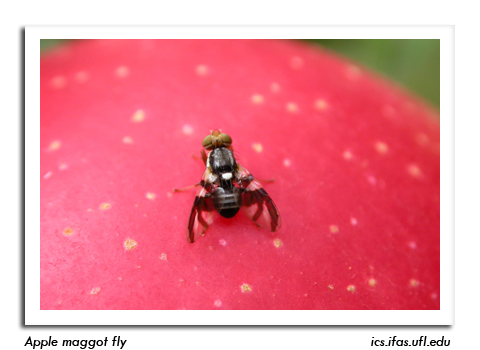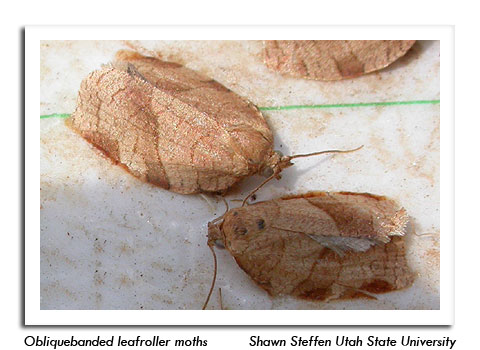
 |
|
|
Fruits
Volume 61 Number 12 Date 07/21/2016 APPLE MAGGOT - Emergence continued this week, with several orchard locations reporting captures of 1-3 flies per trap. Elevated counts of 6-13 flies per trap were reported from Iowa and Sheboygan counties. Growers should reapply sticky coating to traps and maintain apple maggot controls as long as counts exceed the established economic thresholds of one fly per trap per week on unbaited traps or five flies per trap per week on baited traps. CODLING MOTH - Most apple orchards are beyond the summer biofix and treatments for second generation larvae have started. Pheromone trap counts should be used at this time to assess efficacy of first generation control or a weakness in a codling moth management program. According to John Aue of Threshold IPM Services, orchards with counts that remain uniform from trap to trap during the second flight likely have a local, in-orchard population. If using organophosphates (Imidan) for control of the summer generation, growers should replace trap liners before an application to monitor the effectiveness of the material. Moth counts that do not decline to zero or near-zero following treatment suggest resistance issues have developed and use of organophosphate material should be discontinued. SPOTTED WING DROSOPHILA - The UMN-Extension reports that SWD trap captures in the Minneapolis-St. Paul area have increased markedly during the previous two weeks and currently exceed 50 per trap at some raspberry monitoring sites. High counts have also been noted in blueberries and grapes. These numbers are significant and indicate a high risk of SWD infestation. In Wisconsin, emergence of SWD flies also continues to increase and most fruit growers of susceptible small fruits have likely observed the flies or maggots by now. Recommended controls for conventional small fruit growers consist of repeated insecticide applications at four- to five-day intervals. A list of insecticide options can be found on the UW-Madison SWD website at http://labs.russell.wisc.edu/swd/management-2/. For organic operations, the OMRI-approved insecticides PyGanic and Entrust are available for SWD control. OBLIQUEBANDED LEAFROLLER - Larvae are primarily in the late-instar and pupal stages in the southern and western counties. Beyond the first and second instars, this leafroller becomes increasingly difficult to control and much of its feeding damage has already occurred. Emergence of the summer brood of moths is anticipated by early August. POTATO LEAFHOPPER - Pressure is reportedly high in some orchards and associated discoloration of new shoots and mild hopperburn symptoms are appearing. One- to two-year-old, non-bearing apple trees are most susceptible to leafhopper feeding and should be monitored for leaf curling and yellowing caused by the adults and nymphs. Treatment is justified at levels of one or more nymphs per leaf when symptoms are evident. -- Krista Hamilton, DATCP Entomologist 





|
|
|